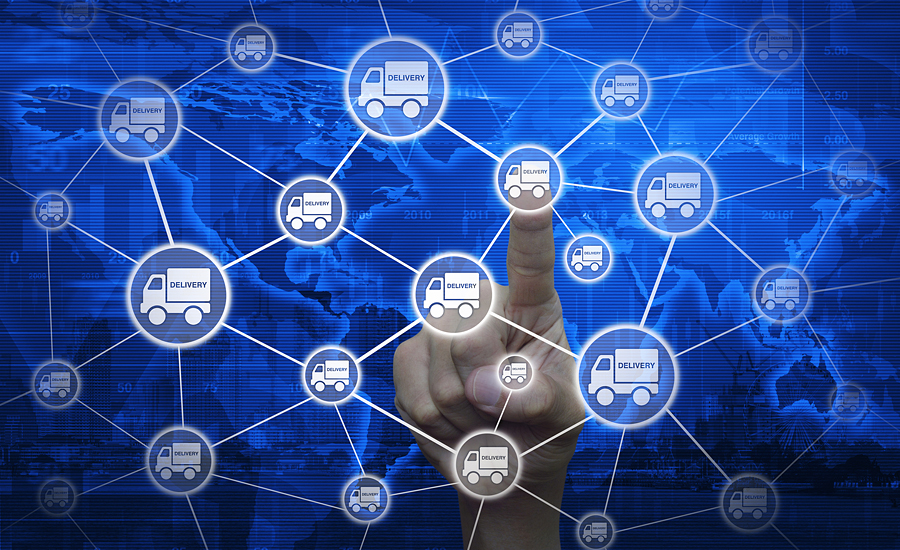Gartner, Inc., Stamford, Conn., identified the Top 8 supply chain technology trends in 2019.
“These technologies are those that supply chain leaders simply cannot ignore,” says Christian Titze, research vice president. “Within the next 5 years, if half of large global companies are using some of these technologies in their supply chain operations, it’s safe to say that the technologies will disrupt people, business objectives and IT systems.”
The Top 8 supply chain technology trends in 2019 outlined in the study, “The 2019 Top Supply Chain Technology Trends You Can’t Ignore,” are:
Artificial intelligence (AI)
AI technology in supply chain seeks to augment human performance. Through self-learning and natural language, AI capabilities can help automate various supply chain processes such as demand forecasting, production planning or predictive maintenance.
“AI supports the shift to broader supply chain automation that many organizations are seeking,” says Titze. “For example, AI can enhance risk mitigation by analyzing large sets of data, continuously identifying evolving patterns and predicting disruptive events along with potential resolutions.”
Advanced analytics
Advanced analytics span predictive analytics — those that identify data patterns and anticipate future scenarios — as well as prescriptive analytics — a set of capabilities that finds a course of action to meet a pre-defined objective. The increased availability of Internet of Things (IoT) data and extended external data sources such as weather or traffic conditions allow organizations to anticipate future scenarios and make better recommendations in areas such as supply chain planning, sourcing and transportation.
“Advanced analytics are not new, but their impact on today’s supply chains are significant,” says Titze. “They will help organizations become more proactive and actionable in managing their supply chains, both in taking advantage of future opportunities and avoiding potential future disruptions.”
IoT
The IoT is the network of physical objects that contain embedded technology to interact with their internal states or the external environment.
“We are seeing more supply chain practitioners exploring the potential of IoT,” adds Titze. “Areas that IoT might have a profound impact on are enhanced logistics management, improved customer service and improved supply availability.”
Robotic process automation (RPA)
RPA tools operate by mapping a process in the tool language for the software “robot” to follow.
“We are seeing a significant reduction in process lead times. RPA technology is used to automate the creation of purchase and sales orders or shipments, for instance,” says Titze. “RPA technology reduces human intervention and improves consistency across manual data sources within manufacturing.”
Autonomous things
Autonomous things use AI to automate functions previously performed by humans, such as autonomous vehicles and drones. They exploit AI to deliver advanced behaviors that interact more naturally with their surroundings and with people.
“The rapid explosion in the number of connected, intelligent things has given this trend a huge push,” says Titze. “The once distant thought of reducing time for inventory checks by using drones’ cameras to take inventory images, for instance, is here.”
Digital supply chain twin
A digital supply chain twin is a digital representation of the relationships between all physical entities of end-to-end supply chain processes — products, customers, markets, distribution centers/warehouses, plants, finance, attributes and weather. They are linked to their real-world counterparts and are used to understand the state of the thing or system in order to optimize operations and respond efficiently to changes.
“Digital supply chain twins are inevitable, as the digital world and physical world continue to merge,” says Titze.
Immersive experience
Immersive experiences such as augmented reality (AR), virtual reality (VR) and conversational systems are changing the way people interact with the digital world.
“In supply chains, organizations might use AR along with quick response (QR) codes and mobile technology to speed up equipment changeovers in factories,” says Titze. “Immersive user experiences will enable digital business opportunities that have not yet been fully realized within global supply chains.”
Blockchain in supply chain
Although supply chain-related blockchain initiatives are emerging, blockchain has potential to fulfill long-standing challenges presented across complex global supply chains. Current capabilities offered by blockchain solutions for supply chain include traceability, automation and security.
“Organizations might use blockchain to track global shipments with tamper-evident labels, allowing a reduction in the time needed to send paperwork back and forth with port authorities and improved counterfeit identification,” says Titze.






